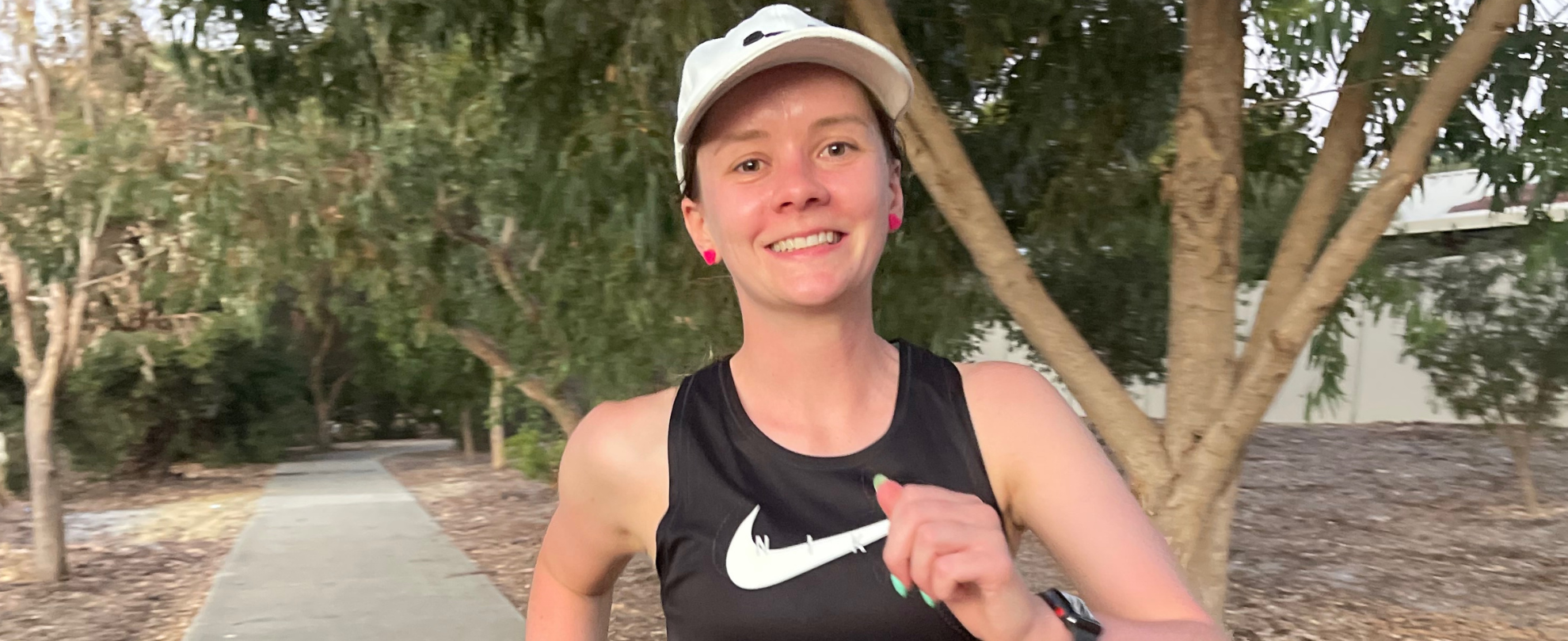New to Kic?
Start your 7 day free trial
Recently, I had the most special morning with some of our Kic community who are starting the 0-3km program as part of our Feel Good challenge.
We spoke about our limiting beliefs around running and why sometimes we don’t feel like a ‘runner’. Often, I hear our community speak about how they feel like their pace isn’t ‘good enough’ and it deters them from running. Starting your running journey isn’t about your pace or distance, it’s all about your ability to believe in yourself.
Your pace doesn’t define your running journey, we need to let go of those fears and rewrite our beliefs into ‘I am a runner’.
Slow running is a trend I’ve recently fallen in love with, and running slow is the first tip we share with the Kic community. Slow running isn’t about pace or distance, it’s about getting out in the fresh air, mindfully tuning into your body and running at a pace that feels good for you.
People assume that going for a run means you have to sprint out the door as far and as fast as you can. But that’s not what it’s about. Over exerting your body will only lead to exhaustion, injury and let’s be real, dread for your next run.
To help us better understand why this is a trend worth running towards, I’ve asked Kic’s physio, Ash Ormond to spill the tea:
So, what actually is slow running?
There is no particular pace that defines what is “slow” and what is not. “Slow running” is individual; one person’s slow pace is another person’s race pace. Perhaps a better way to think of “slow running” is “easy running”, or running at a pace that you feel you could easily sustain for a long period of time. It should feel comfortable, and you should be able to hold a conversation (or sing along to your Taylor Swift playlist).
What are the benefits of slow running?
It sounds backwards, but slow running can actually help you run faster in the long run (pun intended). Our body has 2 main energy systems – aerobic (with oxygen) and anaerobic (without oxygen).
When you run hard, or so fast that you’re out of breath, you’re likely running above your body’s aerobic threshold. When you don’t aren’t getting enough oxygen in, your body switches from your aerobic system to its anaerobic system. In your anaerobic system, your muscles can’t convert glycogen (energy) as efficiently, leading to fatigue.
Not only that, but running all of your runs at a hard effort could contribute to your injury risk, as it places increased load on your tendons, muscles, bones and joints without allowing sufficient time for those structures to adapt to the load you’re placing on them. Running majority of your runs at a slow, easy pace allows for recovery between your hard runs, which not only could reduce your injury risk but allow you to push harder in your speed or interval efforts.
Is there anything else we should know about slow running?
If your goal is running faster, you need to be running slower. But not all of your runs should be slow. Variety is an important factor in any running program. Running “slow” or at an easy pace for the majority of your runs not only allows you to build a strong aerobic base, but will allow your body to be able to go harder in your intervals and race efforts which ultimately is what will support your goal of running faster.
Slow running definitely takes a mindset shift. A lot of people place too much value on pace, and compare themselves to other runners. But it’s important to keep your eyes on the prize, and remember that every runner is on their own journey. It doesn’t matter how fast, or how slow you go. If you run, then you are a runner.
It’s not too late to join our 0-3km Feel Good challenge! Sign up in the app today to start your slow running journey.

Thinking about running? From warming up to training your brain, check out Laura’s advice for beginner runners.

Before starting KICRUN, Keely never saw herself as a runner, let alone actually enjoy running! However, despite a recent autoimmune diagnosis, having the motivation to start running has helped her journey towards proving to herself SHE IS a runner.

Whether you’re a beginner runner or just someone who wants to commit to getting out in the fresh air and moving your body, this challenge has your name on it. Join us as we take things slow and create small, healthy habits that will turn self-doubt into confidence! Ready? Challenge starts 8th of January.
